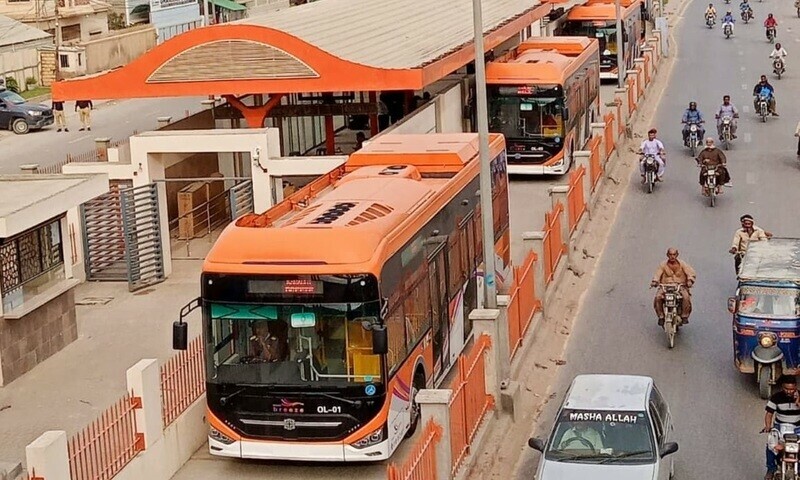Karachi’s Bus Rapid Transit (BRT) People’s Bus Service has been partially suspended on both the Hitech (Green) and Fleet (Orange) lines due to technical failures. This disruption has affected daily commuters, prompting authorities to launch repair operations and arrange alternative transit services.
Affected Lines and Reasons
- Hitech (Green) Line:
Service suspended following detection of power outages in overhead electric wires and signal system malfunctions at key stations, forcing immediate shutdown for safety checks. - Fleet (Orange) Line:
Operational delays and intermittent suspensions reported due to technical faults in the driverless shuttle communication systems, causing buses to halt between stations.
Commuter Impact and Arrangements
- Capacity Challenges:
Morning commuters reported overcrowding at interchanges as passengers struggled to find substitutes, increasing wait times and frustration. - Alternate Transport Provided:
Bus service authorities introduced shuttle buses and mini-bus routes along affected corridors to partly alleviate commuter disruptions. - Passenger Advisory:
Commuters are advised to allow extra travel time, check live service updates via the BRT mobile app, and consider alternate modes where available.
Repair Efforts and Timelines
- Technical Teams in Action:
Field engineers and electricians are working around the clock to restore overhead line power and recalibrate communication modules in autonomous buses. - Interim Testing:
Safety drills and system tests are planned once initial repairs are completed, ensuring operations resume only after full certification. - Expected Service Resumption:
Authorities anticipate partial restoration within 24 hours and complete recovery by tomorrow, pending successful tests.
Broader Urban Mobility Implications
- Reliance on BRT Infrastructure:
The incident highlights Karachi’s growing dependence on electric transit infrastructure and the challenges posed by technical stoppages. - Need for Backup Planning:
Officials are under pressure to develop stronger contingency plans such as reserve vehicle fleets, emergency repair protocols, and passenger communication strategies. - Modern Transit Resilience:
The disruption underscores the necessity for proactive system monitoring, redundancy in critical components, and ongoing staff training for future urban mobility projects.
What’s Next for Commuters and the System
| Element | Details |
|---|---|
| Service Restoration | Partial within 24 hours; full by tomorrow |
| Safety Certification | Post‑repair inspections before operations resume |
| Public Communication | Real‑time alerts via app, social media, station announcements |
| Long-Term Resilience | Infrastructure audits; training redundancy protocols |
This interruption serves as a reminder of the importance of emergency readiness and infrastructure resilience within modern transit systems



Comments (0)
No comments yet. Be the first to comment!
Leave a Comment